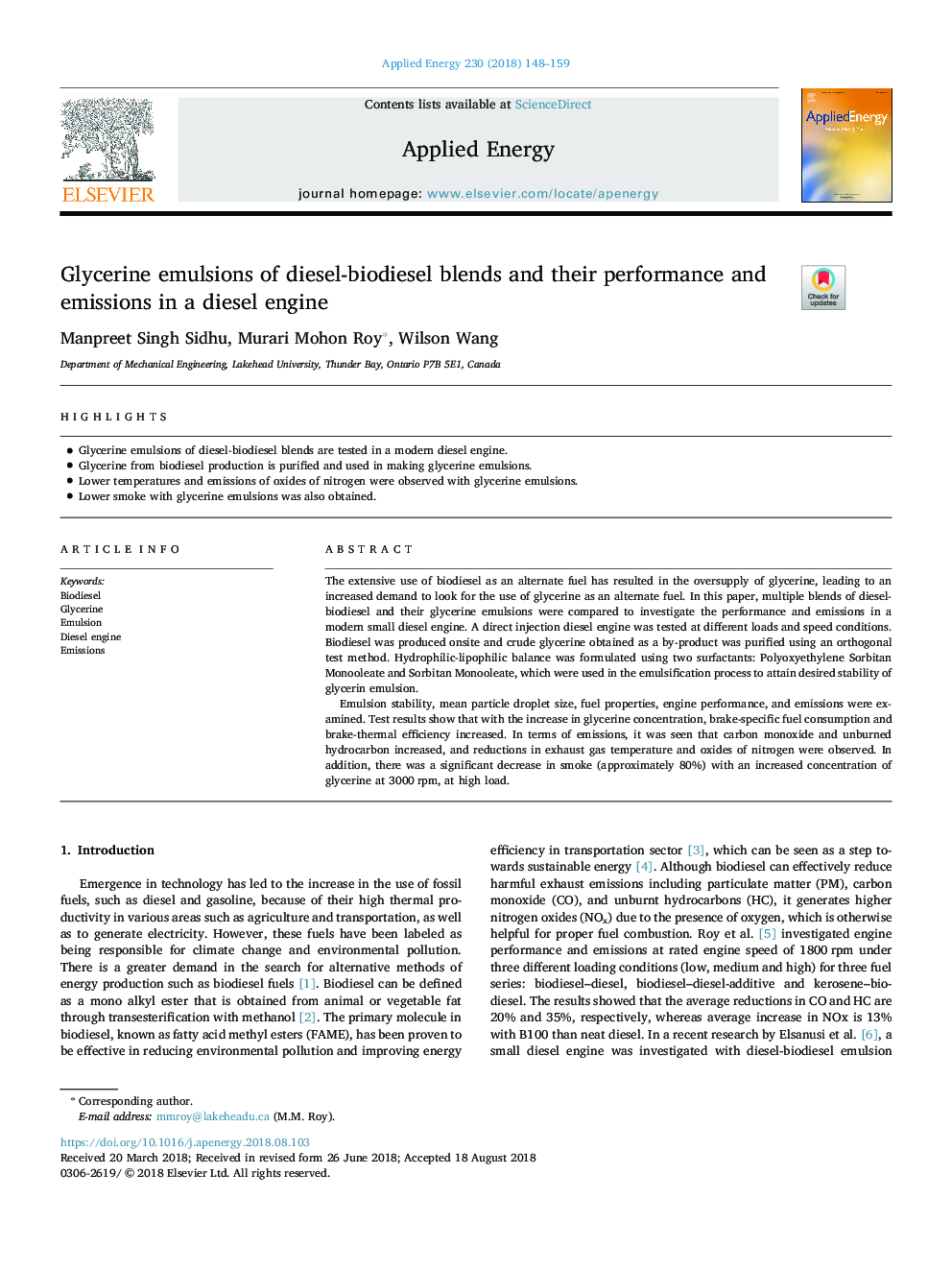| Article ID | Journal | Published Year | Pages | File Type |
|---|---|---|---|---|
| 8946995 | Applied Energy | 2018 | 12 Pages |
Abstract
Emulsion stability, mean particle droplet size, fuel properties, engine performance, and emissions were examined. Test results show that with the increase in glycerine concentration, brake-specific fuel consumption and brake-thermal efficiency increased. In terms of emissions, it was seen that carbon monoxide and unburned hydrocarbon increased, and reductions in exhaust gas temperature and oxides of nitrogen were observed. In addition, there was a significant decrease in smoke (approximately 80%) with an increased concentration of glycerine at 3000â¯rpm, at high load.
Related Topics
Physical Sciences and Engineering
Energy
Energy Engineering and Power Technology
Authors
Manpreet Singh Sidhu, Murari Mohon Roy, Wilson Wang,
